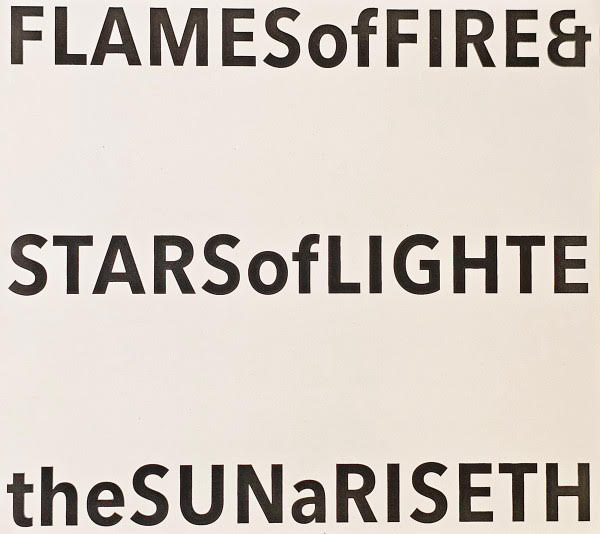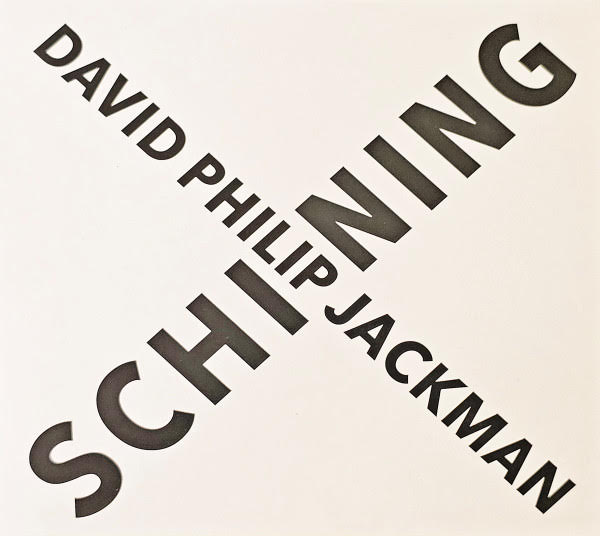
The penultimate editions in Die Stadt’s Organum Electronics/David Jackman Subscription Series (with subscriptions still available, including a bonus disc) both draw from similar sonic elements as the previous releases have, which makes sense given this series of albums are all part of a singular work. Even working with a limited palette of sounds, Jackman rearranges and reconstructs them in a multitude of ways, covering everything from gentle tonal passages to jarring noise.
Flames of Fire, which consists of a single 47-minute piece titled "Flames of Fire & Stars of Lighte the Sun Ariseth" opens with a metallic hum that vaguely resembles the vibrations of a sitar elongated and sustained into infinity. Unlike the work he has done as Organum Electronics in this series, the sense is clearly organic. He retains some electronic elements of course. A serpentine slithering tone that consistently flows—swelling and drifting into the lower end of the frequency spectrum—gives this piece a different feel than the ones that preceded it. The focus shifts to the tones, and he brings in the vibrating gong sounds that have featured in most of his recent work. Comparably though, the structure is a bit more static, and the changes are slower, although a bit of a noisy undercurrent appears towards the final quarter of the disc.
 The other album in this set, Schining, is two discs, each one consisting of a piece slightly over 40 minutes. The first disc begins with the similar sounds from Flames of Fire: a metallic buzz and deep, resonating tone. Here, Jackman shifts the pitch more, the buzzing is a bit sharper, and he utilizes gongs and bells more frequently. A shimmering mix, there is a notable amount of panning, and while the first half is the heavier one, the second features him opening sound up more, giving an almost buoyant quality to the music. Instead of the abrupt ending common to this series, there is more of a slow fade out, but with the bells and gongs still showing up to keep everything dynamic.
The other album in this set, Schining, is two discs, each one consisting of a piece slightly over 40 minutes. The first disc begins with the similar sounds from Flames of Fire: a metallic buzz and deep, resonating tone. Here, Jackman shifts the pitch more, the buzzing is a bit sharper, and he utilizes gongs and bells more frequently. A shimmering mix, there is a notable amount of panning, and while the first half is the heavier one, the second features him opening sound up more, giving an almost buoyant quality to the music. Instead of the abrupt ending common to this series, there is more of a slow fade out, but with the bells and gongs still showing up to keep everything dynamic.
The second part of Schining has Jackman mixing up the dynamics even more, leading off with the crashing gong, but soon stripped back and allowing mostly just a sustained, wavering tone to be in the forefront. The sound resembles what could be an organ but held for infinity. Just as it becomes mesmerizing though, Jackman throws in the bells very loudly, making for an excellent jump scare from a set of releases that have been more about hypnotic repetition. Throughout he quickly changes the mix, with variations coming in rapid succession versus the otherwise slow and steady feel.
Again, like my previous reviews in the subscription series, I have a lot of questions with these two albums, like why is the typography and layout on Flames of Fire completely different than any of his recent work? Why is that one by Jackman, but Schining credited to David Philip Jackman? With a few more installments in this series, I am not sure if the reasoning will become clear or not, but to be honest I do not care all that much. Simply because, like the rest of his discography, Jackman makes even the most basic set of sounds captivating, with his mixing and production having a depth and complexity that is rare. There are primarily four sounds used for a total of over two hours, but I was engrossed the entire time, with his excellent use of changing dynamics making sure my attention never drifted away. David Jackman, either as himself or Organum, or Organum Electronics continues to amaze.

